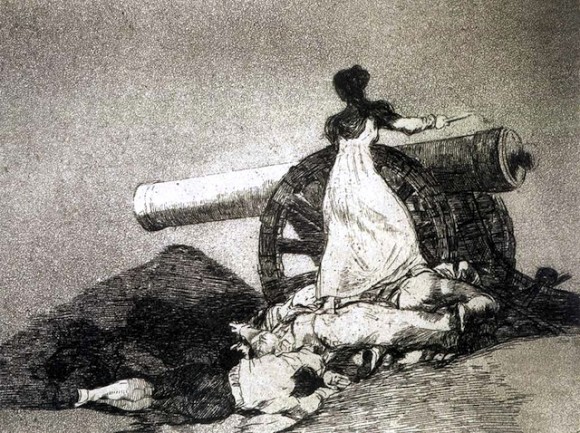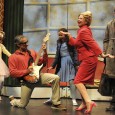Drawing has often been seen as the poor cousin of painting. Smaller, more spindly, less colourful – drawing and graphic arts such as printmaking, by their nature, can lack painting’s drama and spectacle.
But graphic art has its own power and charm. The art of the line can – despite its smaller size and restricted palette, or because of it – pack a punch. And drawing is where most paintings start – as a sketch, a study or cartoon. Drawing can be the artist thinking with a pencil.
The Art Gallery of NSW is currently showing over 130 graphic works from the collection of The British Museum under the title Renaissance To Goya, Prints and Drawings from Spain.
It is one of the finest collections of Spanish drawings in the world and Sydney’s AGNSW is the only Australian gallery to display these works on their world tour – a tour which, in a case of carrying coals to Newcastle, also takes in Madrid’s Prado.
The exhibition spans time – mid-16th century to the 1800s – and space – the major regions of Spain as well as, in the case of José de Ribera, Naples, and of Goya, Bordeaux, where the Spanish artists lived and worked.
Renaissance To Goya is stunning, packing that unique graphic punch across themes of religion, daily life, myth and – in the case of Goya – social commentary and insanity. Peter Raissis, co-curator says it is an “exhibition about an unknown and untold story” as many of these works have not been seen before. Considering the richness of the works on display, that is surprising to hear.
Curator Mark McDonald has taken great pains to mix and match unknown artists with the superstars of the age, such as Velázquez, and artists with artisans – many of these drawings are working design sketches for altar pieces and church furnishings.
Religious expression and function dominate the earlier objects here – as they did the art of the time – and yet there is great humanity and deep feeling amongst them. Francisco de Zurburán’s Head of A Monk from 1635 is a beautifully meditative study of spiritual peace and asceticism – the grey chalk lines and shading reflecting the simplicity of the monk’s life in a way a painting could not.
Spain’s ‘Siglo de Oro’ (Golden Age) of the 17th century is represented by star artists such as Diego Velázquez, Vicente Carducho and Alonso Cano in Madrid, Bartolomé Murillo and Francisco de Zubarán in Seville, and José de Ribera in Spanish Naples. Ribera’s prints in particular stand out for their drama and deep psychological interplays – The Drunken Silenius, with the drunken demi-god having his glass filled by a satyr as Pan cradles his head, is a wicked little short story, masterfully rendered in drypoint.
In the case of Francisco de Goya – the ‘first modern artist’ – McDonald has smartly placed his works among the works of his contemporaries. This serves to show in high relief how singular Goya’s vision was. As his fellow artists continued to present religious themes and works flattering to the royal house (as of course, Goya did – he had to eat), he presented works that held up a clear-eyed and acid-etched mirror to his world.
The works shown here are drawn from Goya’s ‘Disasters of War’ and ‘Caprichos’ series. The ‘Disasters of War’ prints show harrowing visions of the butchery and lawless savagery of war, their horrors scratched into the etching plate like so many tiny knife cuts. The ‘Caprichos’ are Goya’s sardonic and merciless lampoons of Spanish society – hilarious but the laughter is bitter. What cannot be denied is the power and graphic mastery of these pieces – a power that arguably he never achieved in the fuller colour and more spectacular scale of his paintings.
Renaissance To Goya, Prints and Drawings from Spain is a spectacular bringing together of a form of art that often slips under the radar – it is spectacular but spectacular at a human-scale. The experience is quiet, meditative and full of hushed ‘wow’ moments. We have enough noise and colour battering us hourly, daily. A quiet hour or so spent among these calming, grey, blue and ochre works is a precious hour.
Renaissance To Goya, Prints and Drawings from Spain runs until November 24, 2013 at The Art Gallery of NSW, Sydney






